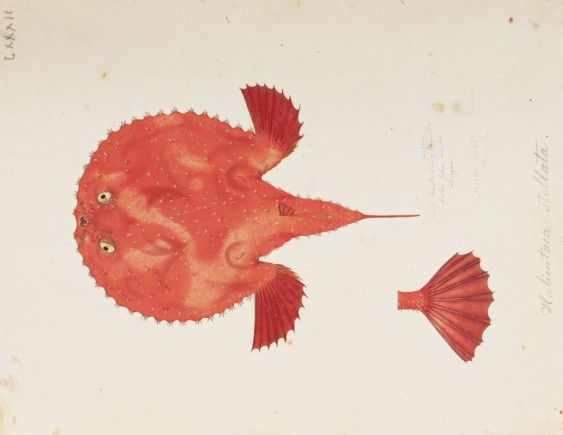 fish prints by Keiga Kawahara | click to enlarge
fish prints by Keiga Kawahara | click to enlarge
Dejima is a small, man-made island built in Nagasaki bay in 1634. During Japan’s self-imposed isolation, between 1603 – 1868, Dejima functioned as a lone outpost – an “anomaly” where foreign ships were allowed to dock and conduct trade.
In an interview, autor David Mitchell describes the island:
It was a keyhole in the door in the wall that encircled Japan for 250 years….Dejima was just this strange, wonderful, weird cat flap of a place between two cultures. It’s what the crew of the Starship Enterprise would call an “anomaly,” a space-time anomaly.
Dejima served as a place where goods, people and ideas mingled. It had all the ingredients for stories to be born. And one of those stories is about the doctor and botanist Philipp von Siebold who, in 1822, was sent from the Netherlands to Japan to gather information on the mysterious country. While based on Dejima he befriended a Japanese painter named Keiga Kawahara, often commissioning him to paint different wildlife species he had found. The collection grew to 6000 – 7000 pieces, and became the basis for books like “Flora Japonica” and “Fauna Japonica.” To this day, his precise drawings are used as samples by biologists.
In a new exhibition, Lost at Sea, on display through September 12, 2012, jewelry artist Nina Sajet creates a series of intriguing jewelry pieces inspired by Keiga Kawahara’s prints. “Fish have had a role in culture through the ages, serving as religious symbols and as the subjects of art, books and movies,” says Sajet. “For me the capturing of the poetic element of the Fish and especially its beautiful shapes lead to new designs.”
Her jewelry collection is on display – juxtaposed alongside Kawahara’s prints – at K-Studio in Nishiazabu, Tokyo.
(many thanks to Chitose Ohchi from O-Jewel)

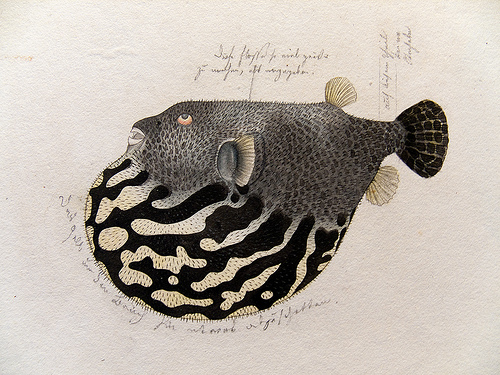
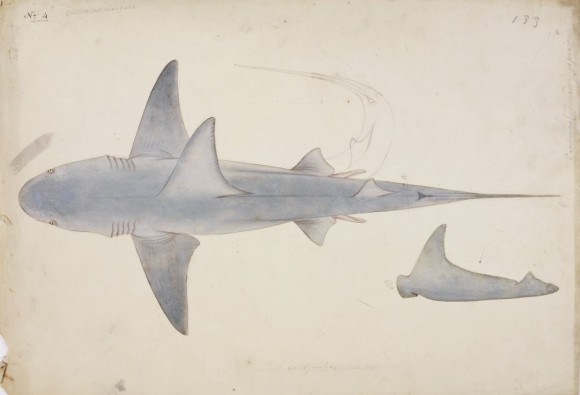
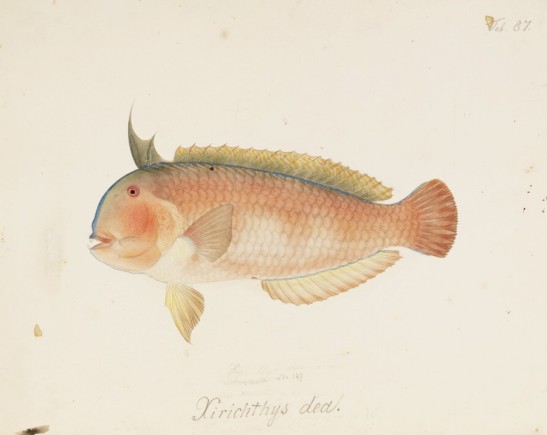
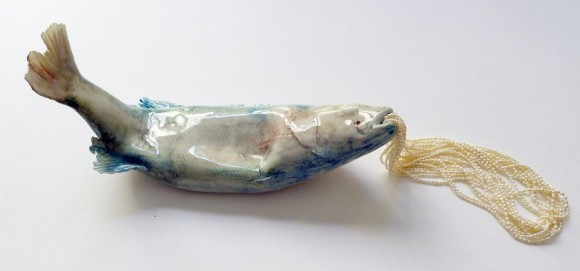
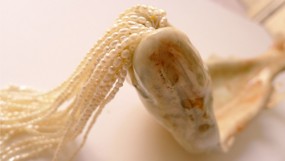
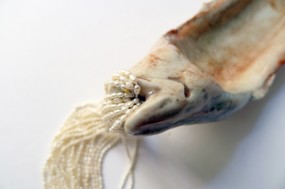
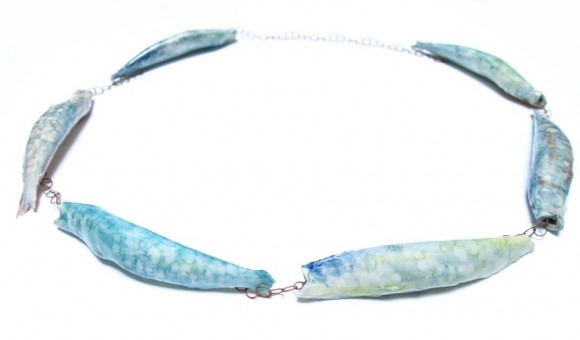
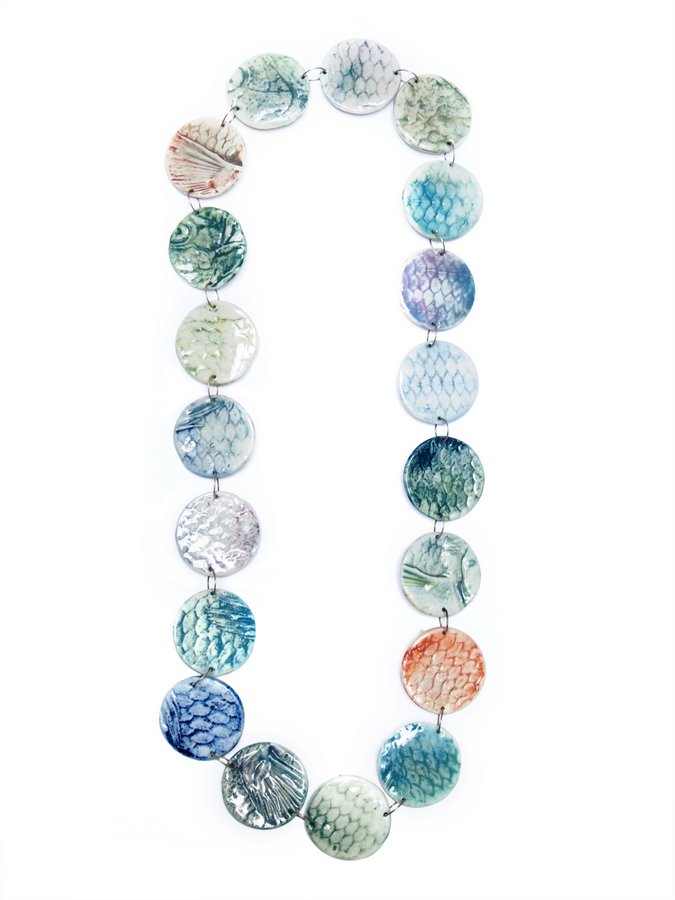
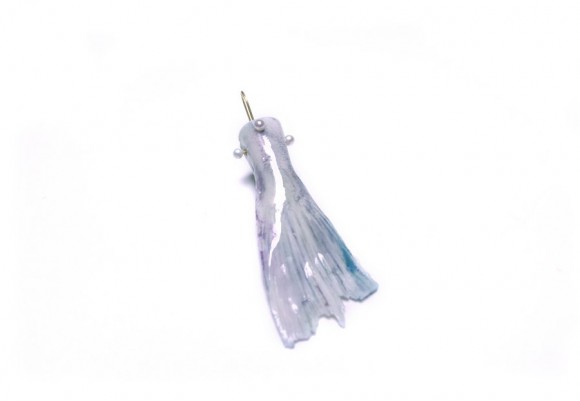

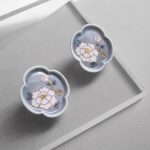
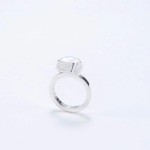
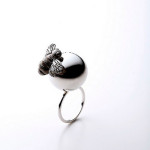
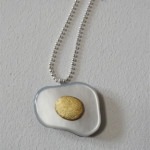


















August 21, 2012 at 9:49 pm
What an interesting source of inspiration for this artist’s jewelry! And the print themselves are really fantastic. If any one has information on a print monograph for Keigi Kawahara, please leave a comment. Also, it seems the following online source provides additional images for our enjoyment and appreciation: http://edb.kulib.kyoto-u.ac.jp/exhibit-e/b05/b05cont.html.
Many thanks to the site’s editor who continues to find and share such great material.
August 22, 2012 at 9:41 am
@John
Thanks for your comment. Most of Kawahara’s fish paintings are collected in the Nationaal Natuurhistorisch Museum in the Netherlands. They have the copyrights of their collection and they sell prints. You can contact the Siebold Huis directly: contact person is Ms. Numata numata[at]sieboldhuis[dot]org
August 24, 2012 at 4:02 pm
Thanks for the tip regarding the Nationaal Natuurhisorisch Museum. I will look them up!